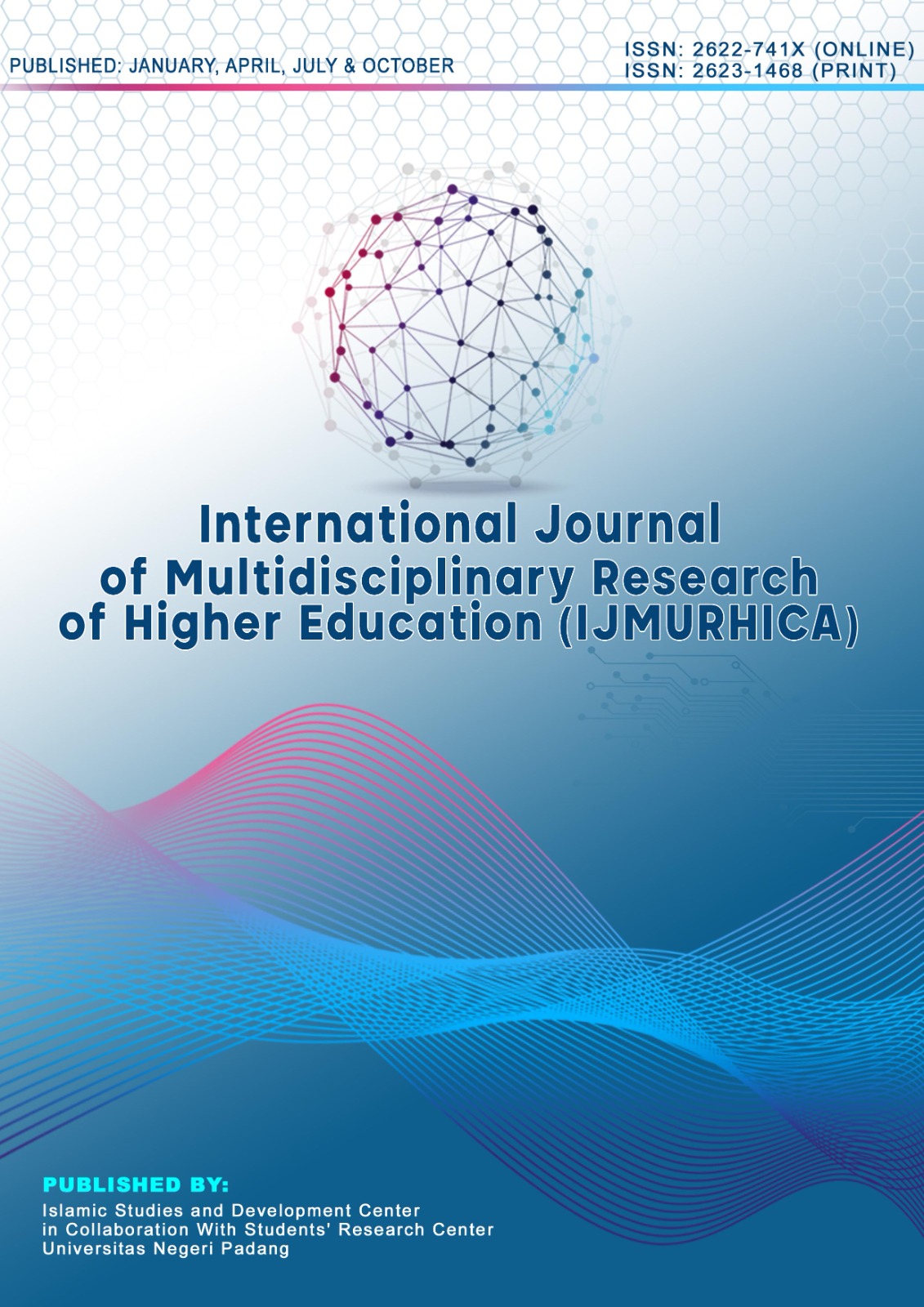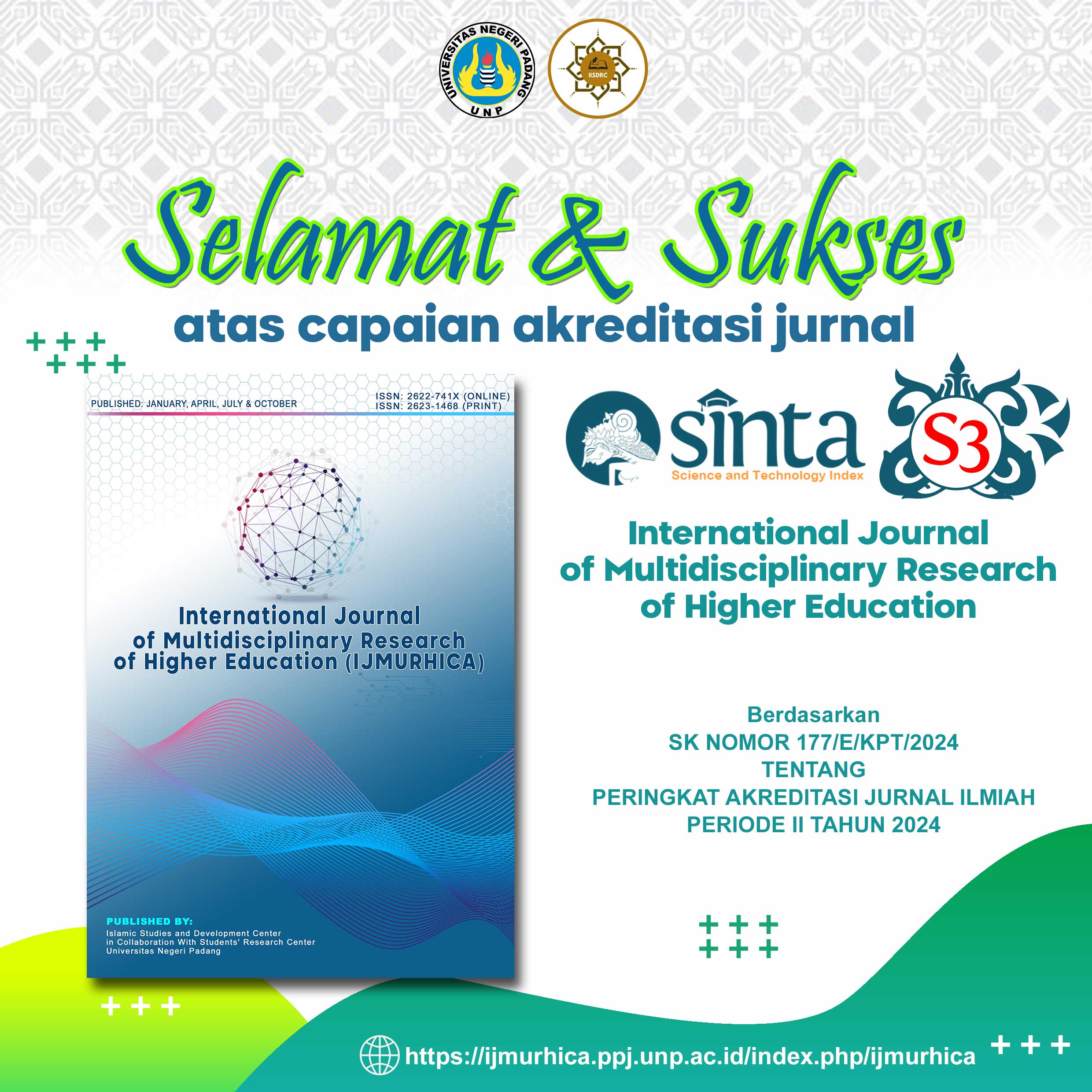Aesthetic Analysis of Nadhom About the Nature of Knowledge in the Kitab of Ta'limul Muta'alim Based on the Principles of Badi' Science
DOI:
https://doi.org/10.24036/ijmurhica.v8i3.347Keywords:
Nadhom aesthetics, nature of knowledge, science of badi'Abstract
The purpose of this study is to analyze how the aesthetics of nadhom in Ta'limul Muta'allim based on the principle of Badi' Science can deepen the understanding of the nature of knowledge in madrasah. This research uses a qualitative method with a case study approach to analyze the aesthetics of nadhom about the nature of knowledge in Ta'limul Muta'allim based on Badi' Science in Madrasah Diniyyah Al-Amiriyyah. Data were collected through text analysis and in-depth interviews with five informants. Text analysis identified balaghah elements such as figures of speech and tasybih in the nadhom. Interviews with ustadz and santri explored their perceptions of the aesthetics of the nadhom in understanding knowledge. This study analyzed the aesthetics of the nadhom using the text guidelines of Badi' Science, and semi-structured interviews. The Miles and Huberman technique includes reduction, presentation, and conclusion drawing. Findings were grouped thematically, validated through triangulation, providing a comprehensive picture of the understanding of the nature of knowledge in pesantren. The results of this study indicate that the use of nadhom aesthetics in learning Ta'limul Muta'allim effectively improves the memory and understanding of santri. The beauty of the language in the nadhom, supported by Badi' Science, helps them understand the philosophical and spiritual meaning of knowledge, not just memorize it. The interaction of aesthetics and teaching creates a dynamic learning environment, strengthens the relationship between ustadz and santri, and fosters a love for knowledge. This finding shows that the nadhom method is not only a memorization tool, but also enriches the cognitive, moral, and spiritual aspects of Islamic boarding school education. With its broad pedagogical value, this method remains relevant in modern Islamic learning, making it an approach that not only maintains tradition, but is also adaptive to the times.
Downloads
Downloads
Published
How to Cite
Issue
Section
License
Copyright (c) 2025 Yazid Sulthon Abdillah, Ro'fat Hizmatul Himmah

This work is licensed under a Creative Commons Attribution-ShareAlike 4.0 International License.






